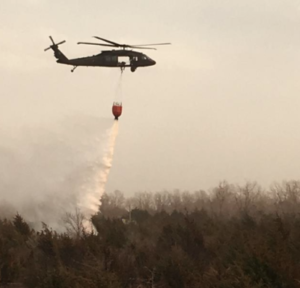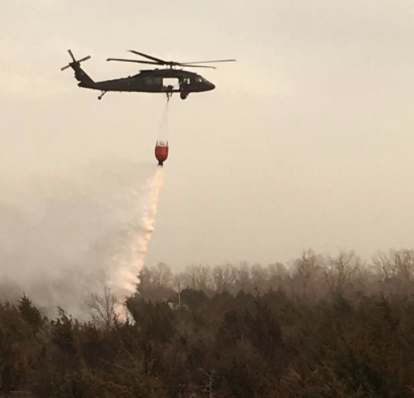
WICHITA, Kan. (AP) — Officials are warning that 2018 could be another bad year for wildfires in Kansas.
The central and southern Plains, including western and southern Kansas, all of Oklahoma and most of Texas, face an elevated threat of wildfires through April. The prediction comes from Kansas State University scientists and a government organization that assesses risks.
The warning issued earlier this week comes after back-to-back years of the worst wildfires in Kansas history. The fires burned thousands of acres and destroyed homes, cattle, fences and power lines. More than 700,000 acres burned in more than 20 counties last March.
“We’re setting up for about the same thing again this spring,” said Greg Ellis, fire chief for Comanche County. “Everybody’s nervous.”
Heavy rain from April through September last year prompted heavy growth of brush and grass, resulting in “large to significant fuel loads” across the region, said Chip Redmond, a meteorologist with Kansas State’s Mesonet. Abnormally dry weather west of Wichita over the past three months is depleting any remaining moisture and drying out the grass, he said.
“We are setting the stage for some large fires in Kansas,” Redmond said.
The Anderson Creek wildfire in 2016 erupted in Oklahoma and spread into Kansas, burning 400,000 acres near Medicine Lodge. Before that, a 2011 fire that burned nearly 40,000 acres in Haskell County held the record for largest wildfire in state history.
Any precipitation this winter will only have a short-term impact on dried grass until spring rains, said Mary Knapp, assistant state climatologist.
“It is what it is,” Ellis said. “We live in Kansas. That’s kind of the way it’s going to be — for now, anyway.”
